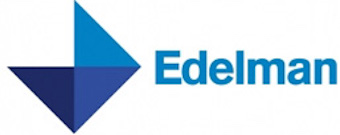 Independent PR firms showed strong growth in 2013. Eight of the ten largest posted double-digit gains as did nine in the 11 to 25 category and 57 in the complete list of 127.
Independent PR firms showed strong growth in 2013. Eight of the ten largest posted double-digit gains as did nine in the 11 to 25 category and 57 in the complete list of 127.Participants documented their financial reports with top pages of corporate income tax returns and W-3s showing payroll totals.
Twenty-six of the firms in the top 50 grew by more than 10%.
PR firms are growing because they not only have to deal with traditional media, although that avenue is shrinking, but with a profusion of other means by which consumers keep themselves informed.
Social media have given consumers new ways of finding out things as well as new ways of expressing their opinions. A host of new electronic tools and software make communicating easier than ever.
A new opportunity for firms is supplying “sponsored content” for financially-pressed media that are beset with depleted and sometimes demoralized staffs.
Also spurring growth of PR firms is the fact that corporations and institutions have just about washed their hands of dealing with the press. They have off-loaded this dangerous function to firms. The traditional house “press contact,” who pursued reporters rather than waiting for them to call, disappeared decades ago.
Firms in the ranking have been asked to provide 100 to 150-word essays describing which parts of their business are growing fastest; the relative importance of traditional vs. new or “social media”; what percentage of staff are independent contractors, and what majors and/or skills they look for in college grads. Essays should by sent by Wednesday, March 12 to [email protected].
Tech Firms Show Growth
 Tech PR firms recorded many of the biggest gains. Edelman’s tech practice grew 36.2% to $265 million.
Tech PR firms recorded many of the biggest gains. Edelman’s tech practice grew 36.2% to $265 million.The category appears to have outstripped healthcare PR, a perennial “hot” PR area. PR is needed at many stages of a tech company, from raising capital for start-ups to PR aimed at experts who assess the new products, wholesale and retail outlets, trade/general media, consumers themselves, and Wall Street firms if fund raising is sought via a public offering.
Second biggest growth in the top ten was racked up by a newcomer to the list, tech specialist Lewis PR. It grew 26.6% to $44.8M. Part of the gain came from the acquisition of Davies Murphy Group, tech firm with fees of $9 million and 65 employees. U.S. offices are in San Francisco, Boston, Washington, D.C., and San Diego. Tech is 95% of the business of Lewis. The firm has 25 owned offices around the world plus five LEWIS+ partner locations.
Partners are in Brazil, Israel, Denmark, Russia and Turkey.
Other big tech firms include SparkPR, $13.4M; LaunchSquad, $11.3M; Max Borges Agency, $9.1M; Inkhouse Media + Marketing, $6.3M; Highwire PR, $6M; Pan Communications, $6M, and The Bateman Group, $4.2M.
LaunchSquad was up 20.8%, Max Borges Agency up 23%, Inkhouse up 43%, Highwire (formerly Borders + Gratehouse), up 47%, and Bateman up 42%.
Zeno Zooms 44%
Biggest gainer in the top ten was Zeno Group, spurting 44% to $35.8 million.
Its sister agency, Edelman, grew 12% to $734.1M, which is more than six times the size of the next reporting firm, APCO Worldwide, which had fees of $120M, about even.
The amount of business added by Edelman in 2013—$78.2M—would rank as the fourth largest PR firm.
Third biggest growth rate in the top ten was posted by healthcare specialist W20 Group, rising 21% to $75M.
Acquisitions helped to fuel the growth of Finn Partners, up 37% to $44.4 million, and Fahlgren Mortine, up 36% to $16.8M. Finn added Widmeyer Communications, Washington, D.C., firm billing $9.8M and FM added lifestyle firm Turner PR, which had 28 staffers.
Disappearing from the top 50 were Qorvis Communications, acquired by Publicis; Atomic, folded into parent Grayling three years after its purchase by Grayling, and CRT/Tanaka, which was acquired by Padilla Speer Beardsley, now PadillaCRT.
Seven Other 20%+ Gainers in Top 50
Seven other PR firms in the top 50 posted gains of more than 20%:
Hunter PR, New York, +26.5% to $18.4M.
Launch Squad, San Francisco, +20.8% to $11.3M.
Hager Sharp, Washington, D.C., +47% to $10.4M.
Max Borges Agency, Miami, +23% to $9.1M.
Dodge Communications, Alpharetta, Ga., +27% to $7M.
Foodminds, Chicago, +32% to $6.4M.
Inkhouse Media + Marketing, Waltham, +43% to $6.3M.
Big Gainers in 50-127 Category
Big gains were posted by the following in the 50-127 category:
360 Public Relations, Boston, +30% to $6.1M.
Highwire PR, San Francisco, +47% to $6M.
Moore Comms. Group, Tallahassee, +24% to $4.2M.
Bateman Group, San Francisco, +42% to $4.2M.
Walker Sands Comms., Chicago, +36% to $3.8M.
J Public Relations, San Diego, +26% to $3.3M.
Konnect Public Relations, Los Angeles, +90% to $2.3M.
SPM Communications, Dallas, +22% to $2M.
Hope-Beckham, Atlanta, +21% to $1.6M.
Blaze, Santa Monica, +22% to $1.5M.
Perry Comms. Group, Sacramento, +44% to $1.5M.
North 6th Agency (N6A), New York, +25% to $1.4M.
Idea Grove, Dallas, +51% to $1.4M.
Gatesman + Dave, Pittsburgh, +31% to $1.4M.
Conglomerate Firms Miss the Boat
A vast amount of data is missing from this picture of the counseling industry because the leaders of the ad/PR conglomerates—John Wren and Randy Weisenburger of Omnicom, Martin Sorrell of WPP, Michael Roth of Interpublic, and Maurice Levy of Publicis—have not accepted that this is the Age of Information.
They have blocked their hundreds of ad agencies and PR firms from taking part in any industry rankings since 2001.
There is no logical ground for this info dam although they have claimed that Sarbannes-Oxley makes it hazardous for them to report finances worldwide because of differing accounting conventions.
Payroll totals and full-time staff are hard-data “compilations” that do not differ from country to country. They are not subject to opinions of CPAs. An employee is an employee. The biggest firms in the O’Dwyer ranking have offices in dozens of countries and are able to report fee income and staffing data.
The conglomerate PR firms, including such names as Weber Shandwick, Hill+Knowlton Strategies, Burson-Marsteller, FleishmanHillard, Ketchum and Porter Novelli have missed out on where much of the action is—the specialty rankings (tech, healthcare, financial, food, travel, etc.).
Potential clients have searched for firms by those categories since they were introduced in 1991 by the O’Dwyer rankings.
OMC Sues Small Shareholder
 OMC’s current lawsuits against stockholder John Chevedden speak volumes about the militant, lawyer-dominated way OMC conducts its business. It’s typical scorched earth, iron maiden, take-no-prisoners Wall Street behavior.
OMC’s current lawsuits against stockholder John Chevedden speak volumes about the militant, lawyer-dominated way OMC conducts its business. It’s typical scorched earth, iron maiden, take-no-prisoners Wall Street behavior.Chevedden needs to get The Court of Public Opinion: Winning Your Case with PR by New York lawyer James Haggerty.
He says lawyers have a “tin ear” when it comes to public perception of their side. They are used to making highly detailed arguments to a judge or jury, giving great weight to precedent cases, he notes. What’s needed is a “sound bite,” a pithy, hard-hitting summary, says Haggerty.
He urges litigants to reduce their cases to 20 words. Here’s our shot at Chevedden’s case:
Stockholder who wants highly-paid Omnicom execs not to have an early peek at stockholder votes is hauled into four expensive Federal Courts by OMC, bypassing a free SEC process.
Management should not have any information on voting that the owners of the company (the shareholders) do not have. Chevedden must get across the fairness of his stand to general and trade editors throughout the U.S. Plenty of details are in a Chevedden filing.
Chevedden must focus attention on the mind-blowing 2012 pay packages of CEO John Wren and COO Randy Weisenburger ($53.3 million and $31.5M, respectively).
Doing so “piggybacks” on one of the major issues of the day—income disparity. The 200 highest-paid CEOs are averaging $15M yearly in packages. A survey by Bolt Insurance found Wren to be the 11th highest paid exec in 2012—making more than Jamie Dimon of JPMorgan Chase.
Concentration of Power Also an Issue
The OMC vs. Chevedden lawsuit should also piggyback on another issue—the concentration of power in many industries such as banks, airlines, railroads, telecommunications, prescription drugs, gas pipelines, etc., which limits consumer choices and promotes abusive practices.
Among critics of this trend is David Cay Johnston, author of The Fine Print: How Big Companies use ‘Plain English’ to Rob You Blind. He and others have condemned Comcast’s plan to take over Time Warner Cable. The income of the bottom 90% of Americans is back where it was in the 1960s, he has noted. The income of the top 1% has exploded, particularly in the past year.
Assuming the merger of OMC and Publicis goes through this spring, it will create an empire of three ad/PR conglomerates employing 280,000 people. It will give a few companies the power to decide which media live and which die. Some will be given just enough sustenance to keep them in a weakened state. Among the casualties of the stingy conglomerates are seven PR publications that died since 2001.
Ketchum Was Friendliest of PR Firms
The freeze on press relations that now characterizes OMC is the opposite of what we experienced with the OMC PR firms before they were purchased.
Friendliest of all was Ketchum. Paul Alvarez hosted reporters for golf at the Siwanoy Golf Club in Westchester while Dave Drobis did the same for tennis players at the Tonkeneke Club in Darien. Alvarez invited reporters to his wedding. Both entertained reporters via numerous nights “on the town” in New York.
Alvarez, 55, left the firm in 1997, less than a year after its purchase. Drobis retired at 62 in 2003. Ketchum was $13 million in debt when it sold to OMC. Banks had called its loans because terms were being violated.
Cut to today. Ketchum CEO Rob Flaherty, although co-chair of the 2012 PR Society of America conference in San Francisco, wouldn’t return a phone call or e-mail when we asked for his help in getting into the Assembly, exhibit hall and the general sessions.
The Society in 2012 was at its most savage with us—having guards chase us from the lobby of the Marriott because we dared to talk to someone and ordering us to stand across the street and not come back Also ignoring our pleas for help was co-chair Jack Martin of H+K Strategies.
Byoir Was Most Press-Oriented
H+K, before its purchase by J. Walter Thompson in 1980, which was then the object of a hostile takeover by WPP in 1987, was one of the press-friendliest of PR firms. Also falling under the control of WPP was Carl Byoir & Assocs., which had been purchased by H+K in 1986 from True North (formerly Foote, Cone & Belding) using $12 million of Byoir’s own money.
Byoir was the most press-oriented of all the firms. It had 293 employees in 1978 when it was bought by FCB in 1978, becoming the first major PR firm (No. 2 in the O’Dwyer rankings) to sell out to an ad agency. Byoir’s ideal employee was a former staffer for UPI or AP.
Current OMC press policy is the opposite of that practiced by another OMC PR acquisition—Richard Weiner Assocs.
OMC purchased the firm in 1986, combining it with BBDO, Doremus and Needham, Harper & Steers. Within a couple of years, just about all Weiner staffers had departed.
Richard Weiner stressed building good relations with reporters. He not only welcomed them at his firm and answered their questions, but sent many of them a steady stream of newsclips and comments that could help with their stories. This reporter had never known him to duck a phone call, a practice he continued until his death although he lived mostly in Florida for the past more than 20 years.
Nine friends of Weiner posted hundreds of words memorializing him and his philosophy on the O’Dwyer obit.


 DJE Holdings, parent of Edelman and Zeno, launches RUTH as an independent shop named after Ruth Edelman, mental health advocate, wife and longtime business partner of Dan Edelman.
DJE Holdings, parent of Edelman and Zeno, launches RUTH as an independent shop named after Ruth Edelman, mental health advocate, wife and longtime business partner of Dan Edelman. New York City PR firms make up the largest slice of O'Dwyer's 147 firm overall ranking with 33 of 40 in the New York/New Jersey area either calling Manhattan their home or having a presence there.
New York City PR firms make up the largest slice of O'Dwyer's 147 firm overall ranking with 33 of 40 in the New York/New Jersey area either calling Manhattan their home or having a presence there. Subject Matter+Kivvit, which joined forces in May, has rebranded as Avoq, an integrated shop with more than 200 professionals in Washington, New York, Asbury Park (NJ), Miami and Chicago.
Subject Matter+Kivvit, which joined forces in May, has rebranded as Avoq, an integrated shop with more than 200 professionals in Washington, New York, Asbury Park (NJ), Miami and Chicago. While PR pros stationed at in-house comms. teams and those working for agencies share many of the same objectives, they also have markedly different top priorities, according to a recent report.
While PR pros stationed at in-house comms. teams and those working for agencies share many of the same objectives, they also have markedly different top priorities, according to a recent report. Edelman is cutting 240 employees or about four percent of its workforce to cope with the cooling down of the PR sector, according to a memo from CEO Richard Edelman.
Edelman is cutting 240 employees or about four percent of its workforce to cope with the cooling down of the PR sector, according to a memo from CEO Richard Edelman.


 Have a comment? Send it to
Have a comment? Send it to 
No comments have been submitted for this story yet.